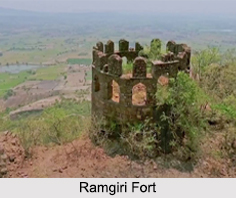 Also known as the Ramgiri Khilla, the Ramgiri Fort is located atop a mountain in the Peddapalli district of the state of Telangana. Constructed within a thickly forested area of different plant species, including many medicinal herbs, the Ramgiri Fort provides a scenic view of the confluence of the Manair and Godavari Rivers.
Also known as the Ramgiri Khilla, the Ramgiri Fort is located atop a mountain in the Peddapalli district of the state of Telangana. Constructed within a thickly forested area of different plant species, including many medicinal herbs, the Ramgiri Fort provides a scenic view of the confluence of the Manair and Godavari Rivers.
Legend of Ramgiri Fort
It was believed that even before the construction of the fort, Kalidasa, the classical Sanskrit poet, used to live there in the 5th century. It is said that he was motivated to compose Meghaduta, a lyrical poem, by the Ramagiri
History of Ramgiri Fort
The Ramgiri Fort was constructed by the Kakatiyas of Warangal but was later controlled by the Qutub Sahi Sultanate from 1518 to 1687. Over the turn of the centuries, the fort passed through several hands and in 1656, the ruler of Golconda, Abdullah Qutb Shah, gave the fort to his son-in-law, one of Aurangzeb`s sons. But eventually in 1791, the Ramgiri Fort came under the British Empire.
Architecture of Ramgiri Fort
Built from stone in 12th century, the Ramgiri Fort spreads over a large sprawling area and has many octagonal shaped bastions. The fort had been fitted with 4 wedged cannons on the masonry battlements built to a height of 39 ft as part of the fort walls. It is said that the mud plaster that covered some of the structures in thick layers was a combination of mud, lime, reeds, hair of animals or even blood of animals.
Visiting Information on Ramgiri Fort
The nearest railway station is at Peddapalli at a distance of almost 31 km from the fort and the Ramagundam Airport is the closest at a distance of 37 km from the Ramgiri Fort.
This article is a stub. You can enrich by adding more information to it. Send your Write Up to content@indianetzone.com.



















